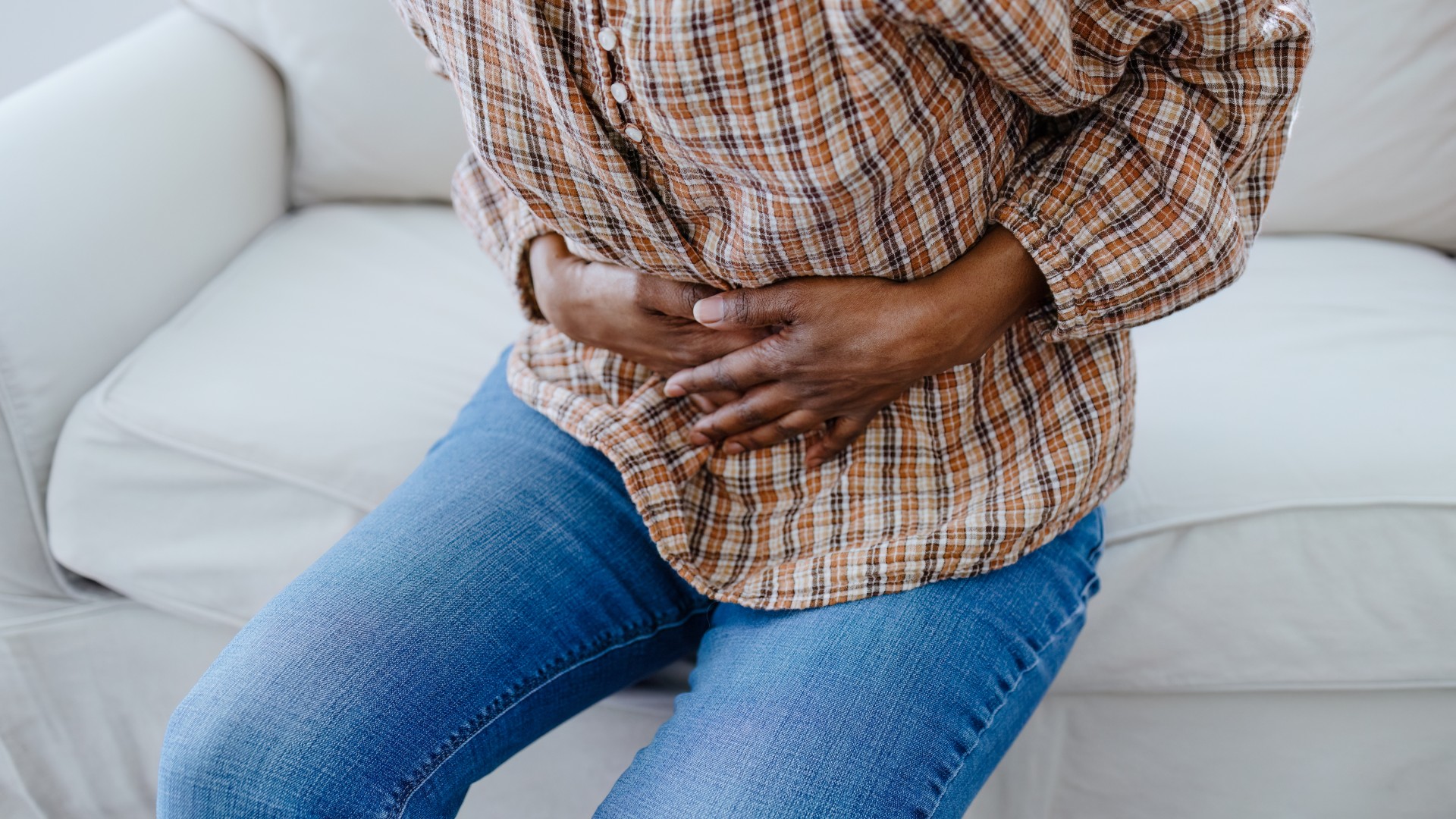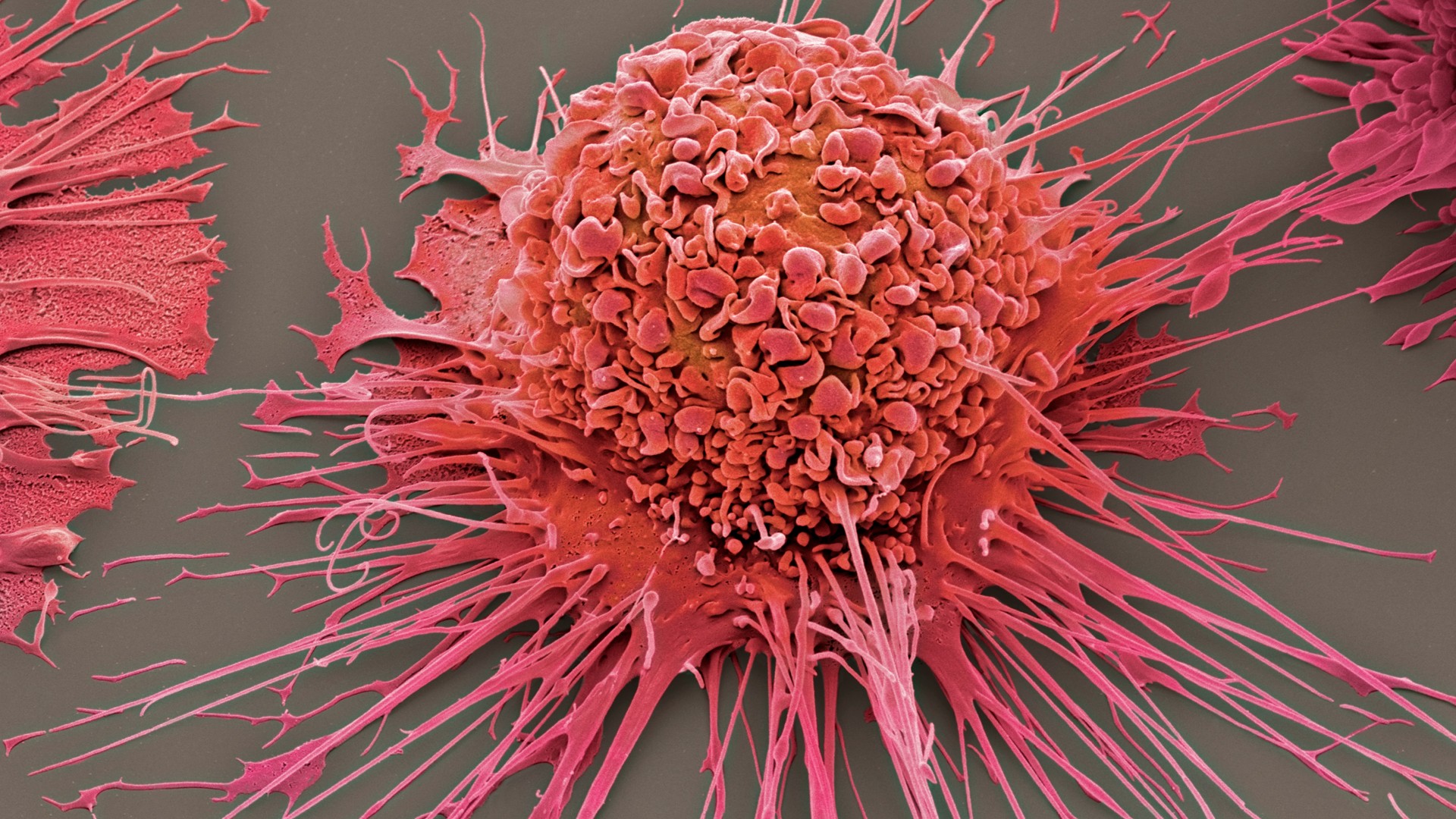
Scientists have pinpointed the cells that likely drive the debilitating pain associated with endometriosis.
In endometriosis, tissues that normally line the uterus grow in other parts of the body, such as the fallopian tubes or the ovaries, and this often causes intense, chronic pelvic pain. It turns out that this pain may be sparked by crosstalk between pain-sensing neurons and immune cells called macrophages within the diseased tissues. That's according to a new study, published Wednesday (Nov. 6) in the journal Science Translational Medicine.
The researchers behind the study found that they could block this interaction from happening using already-approved drugs. The medications reduced signs of pain in mice with a condition similar to endometriosis. With further testing, these drugs could be repurposed as potential new treatments for the condition in humans, they suggest.
Endometriosis affects approximately 10% of cisgender women and 25% of transgender men. One of the main ways patients manage their pain is to take large amounts of non-steroidal anti-inflammatory drugs (NSAIDs), such as ibuprofen, said Victor Fattori, lead study author and a postdoctoral research fellow at Boston Children's Hospital. These drugs help reduce the pain in a non-specific way, meaning they don't target the pain's root cause.
Related: Endometriosis may quadruple risk of ovarian cancer, study finds
In addition, hormonal therapies can indirectly relieve pain by reducing the growth of endometriotic tissue.
Both these treatment options prove ineffective for many patients and they can cause notable side effects. For instance, long-term ibuprofen use can severely damage the kidneys and the liver, while hormonal therapies can disrupt menstruation, disturb mood and cause weight gain. There is an option for doctors to perform surgery to try and remove or destroy a patient's endometriotic tissue — but again, this approach is not always successful.
Therefore, there is an urgent need to find safer and more effective treatments for endometriosis and its symptoms.
Toward that end, the researchers analyzed endometriotic tissues collected from mice with the disease, as well as samples from eight human patients who'd had the tissues removed during surgery. The scientists discovered that the tissues contained a chemical messenger called calcitonin gene-related peptide, or CGRP, and the receptor it uses to bind to cells, known as RAMP1. This is the same chemical released by the nerve endings during a migraine attack, and it's thought to cause migraine pain.
The team then bred genetically modified mice who had endometriosis but didn't have a specific set of pain-sensing neurons — called TRPV1 — that had previously been linked to endometriosis pain. As expected, the mice no longer experienced pain, but perhaps unexpectedly, the size of their endometriosis lesions also shrank.
This finding hints that the activation of these pain neurons and the release of CGRP within the tissue may collectively contribute to the growth of endometriosis lesions and the pain they cause.

In further experiments, the team found that one of the main types of cells in the endometriosis lesions that CGRP interacted with were macrophages, a type of immune cell. CGRP caused the cells to behave in a way that promoted the growth of endometrial cells nearby. This supports the theory that these specific immune cells drive the disease.
Given that CGRP seemed to fuel endometriosis, the team theorized that blocking its action would have the reverse effect. So the researchers tried treating mice with existing drugs that blocked CGRP, finding the rodents' pain and the size of their endometriosis lesions declined. The drugs they tested — fremanezumab, galcanezumab, rimegepant, and ubrogepant — are already approved by the U.S. Food and Drug Administration (FDA) to treat migraines, which are also commonly experienced by patients with endometriosis.
Given that these four drugs have been shown to be safe in clinical trials and are already FDA-approved for migraine treatment, they may offer a safer and more effective alternative to the current drugs being used for endometriosis pain, Fattori theorized. And because of the drugs' approval status, they could be used in patients within a quicker timeframe than new drugs that would require testing in long trials.
Going forward, the team now wants to determine how exactly macrophages drive endometriosis lesions to grow, he said. They hope that this line of research will provide valuable additional insight into the cause of the disease, and how to counter it.
This article is for informational purposes only and is not meant to offer medical advice.
Ever wonder why some people build muscle more easily than others or why freckles come out in the sun? Send us your questions about how the human body works to community@livescience.com with the subject line "Health Desk Q," and you may see your question answered on the website!







